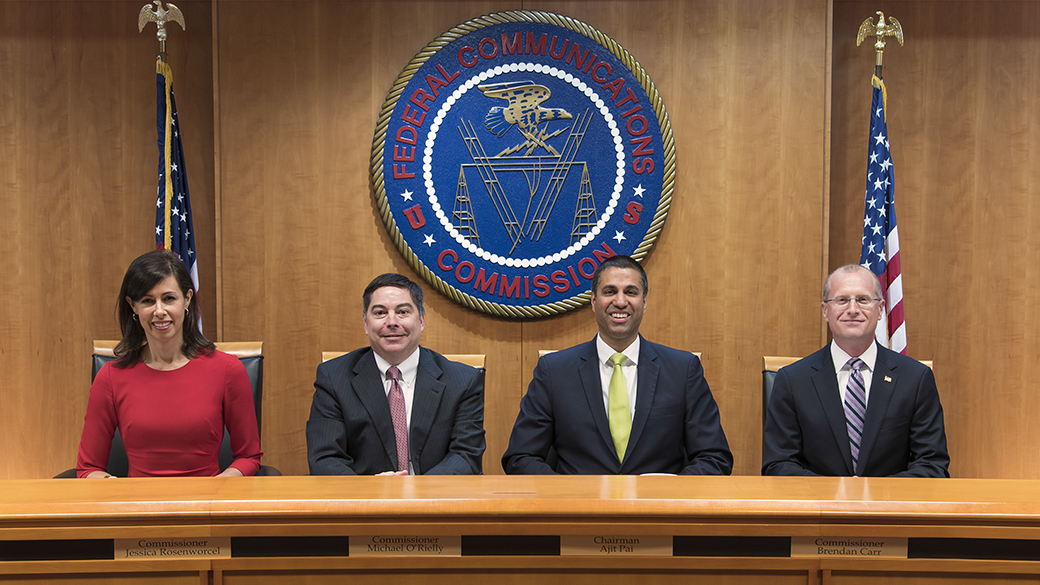UPDATED: The Federal Communications Commission (FCC) on Nov. 15 unanimously approved waivers allowing the use of the Galileo E1 and E5 signals for non-federal purposes in the U.S. and denied the E6 signal waiver request. Approving the E6 waiver “could constrain our future spectrum management for non-Federal operations in the U.S.” the FCC wrote in the draft order document released ahead of the meeting.
Editor’s Note: Below is the original article that was published yesterday, prior to today’s vote.
The Federal Communications Commission (FCC) is expected to vote Nov. 15 to approve a waiver enabling the use of key Galileo satellite navigation signals in the U.S. for non-federal, official purposes.The request, which has been in the works since October 2013, and in the hands of the FCC since January 2015, was initially expected to get easy approval. It became ensnarled in controversy, however, when LightSquared — and then its successor company Ligado Networks — proposed to use mobile satellite service (MSS) frequencies neighboring the radio navigation band to also support terrestrial broadband services. Tests have shown that both the company’s original and subsequent plans pose an interference risk to satellite navigation users. Granting a waiver means that the Galileo signal, like the GPS signal, must be protected — potentially complicating Ligado’s plans.
The Galileo E1 signal band stretches closer to the Ligado frequencies than the GPS L1 signal but still falls in the international allocation for radio navigation satellite service (RNSS) band, which is the band’s primary use. That band is also a protected aviation radio navigation service band. Though some differences in the European filings created confusion over whether the Galileo E1 signal was actually wider than the RNSS band this was resolved during the comment period, the FCC said, in a report accompanying the draft resolution. Moreover, the European Commission (EC) acknowledged that a small amount of energy from Galileo’s Public Regulated Service signal in the 1559-1591 MHz band would fall into the neighboring frequencies below 1559 MHz where Ligado has its frequencies. However, the EC said, “Galileo users should not seek to claim protection for reception of signal energies outside of the RNSS allocation from systems operating in the lower adjacent band that are operating in accordance with the ITU Radio Regulations.”
In the report the FCC listed the benefits that would arise from adding Galileo service to U.S.-based receivers. A great deal of work has gone into making GPS and Galileo interoperable, the FCC acknowledged, and approval would increase the “availability, reliability, and resiliency” of satellite navigation service and boost accuracy and continuity. The FCC also highlighted comments from the European Global Navigation Satellite Systems Agency that location-based services, in particular, would benefit from approving Galileo capability in the U.S. as would road services (e.g., driving directions), aviation, rail, maritime, agriculture, surveying and mapping, and timing and synchronization.
Not all of the Galileo waiver request, however, will be granted. The draft resolution now before the FCC would grant the waiver for theGalileo E1 signal (operating in the 1559-1591 MHz frequency band, and the E5 signal ( 1164-1219 MHz). The FCC plans to deny the request for operations using the Galileo E6 signal, which is transmitted over the 1260-1300 MHz frequency band.
There is no federal or non-federal allocation for RNSS in the U.S. Table of Frequency Allocations in that band, wrote the FCC, “and grant of waiver could constrain our future spectrum management for non-Federal operations in the U.S. in spectrum above 1300 MHz, where potential changes in the non-Federal allocation are under consideration.”
Approval of Galileo E1 and E5, which is widely expected, is particularly important for official, nonfederal services. The federal government can use Galileo signals without an FCC waiver while many individuals have multi-system (GNSS) chips in their phones already and don’t realize it. In fact many, if not most, GPS receivers already have the ability to use Galileo and other signals and that use is not blocked.
The public, however, would benefit greatly from the addition of Galileo signals to regulated services like telecommunications. The majority of 911 calls now come from cell phones and the FCC has not allowed phone companies to use non-GPS systems to help them meet requirements for locating callers — at least not until those services were granted a waiver.
CTIA, which represents the U.S. wireless communications industry, asked that the FCC make clear that Galileo could now be applied to meet those requirements.
“The draft Order describes the beneficial uses of the Galileo GNSS for numerous critical infrastructure purposes, including transportation by land, sea and air, agriculture and food security, mapping, construction, scientific research, financial operations, and power grids,” CTIA wrote in a Nov. 7 letter describing a meeting with the FCC. “…The significant public interest benefits in supplementing U.S. GPS with the Galileo GNSS for these critical infrastructure purposes apply equally to efforts to enhance wireless 9-1-1 location accuracy capabilities.” For this reason, CTIA said, it urged the Commission during the meeting “to explicitly permit the use of the Galileo GNSS for 9-1-1 purposes consistent with the draft Order, subject to the accuracy testing required for other wireless 9-1-1 location accuracy technologies.”






